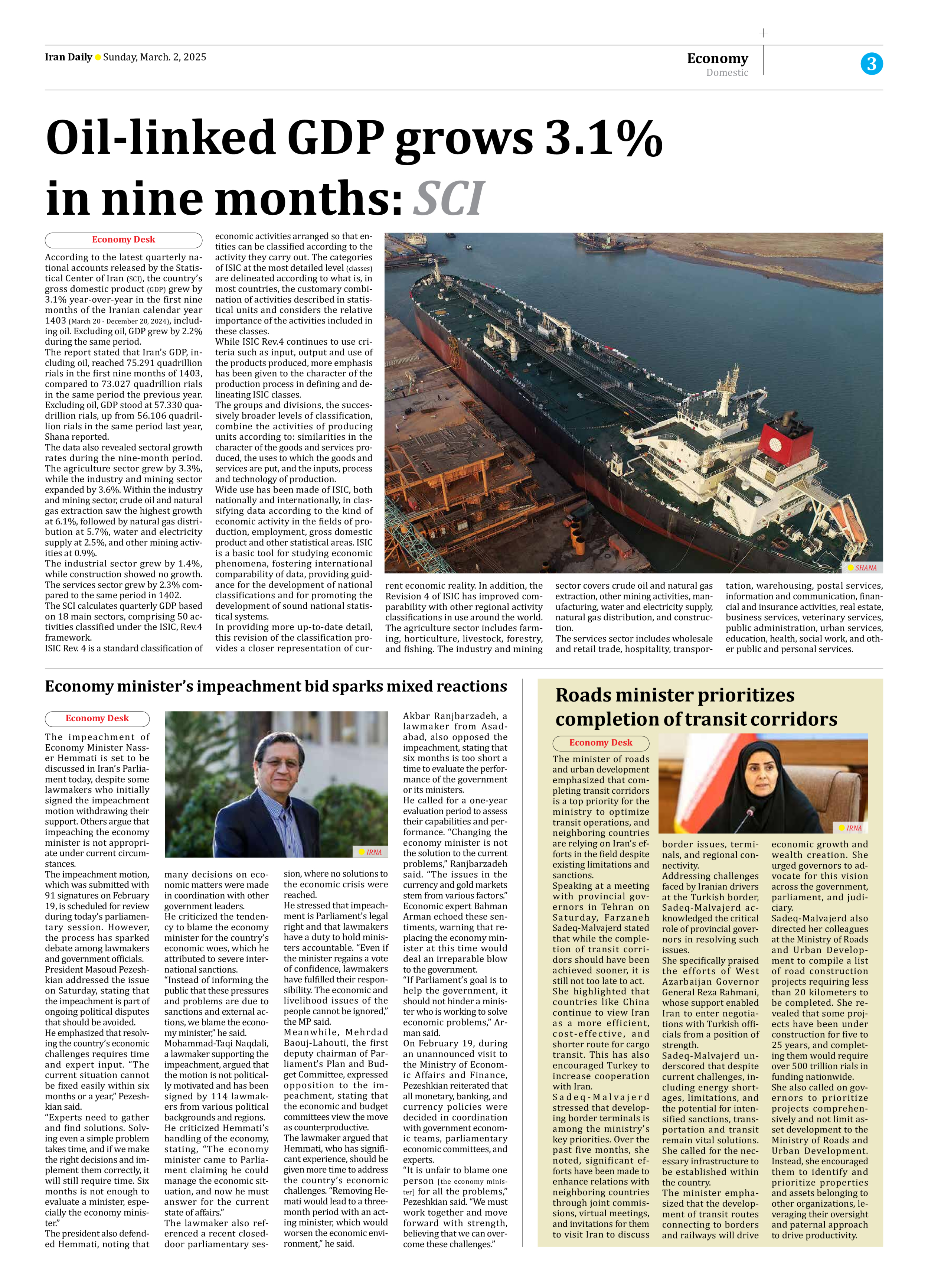
Oil-linked GDP grows 3.1% in nine months: SCI
According to the latest quarterly national accounts released by the Statistical Center of Iran (SCI), the country’s gross domestic product (GDP) grew by 3.1% year-over-year in the first nine months of the Iranian calendar year 1403 (March 20 - December 20, 2024), including oil. Excluding oil, GDP grew by 2.2% during the same period.
The report stated that Iran’s GDP, including oil, reached 75.291 quadrillion rials in the first nine months of 1403, compared to 73.027 quadrillion rials in the same period the previous year. Excluding oil, GDP stood at 57.330 quadrillion rials, up from 56.106 quadrillion rials in the same period last year, Shana reported.
The data also revealed sectoral growth rates during the nine-month period. The agriculture sector grew by 3.3%, while the industry and mining sector expanded by 3.6%. Within the industry and mining sector, crude oil and natural gas extraction saw the highest growth at 6.1%, followed by natural gas distribution at 5.7%, water and electricity supply at 2.5%, and other mining activities at 0.9%.
The industrial sector grew by 1.4%, while construction showed no growth. The services sector grew by 2.3% compared to the same period in 1402.
The SCI calculates quarterly GDP based on 18 main sectors, comprising 50 activities classified under the ISIC, Rev.4 framework.
ISIC Rev. 4 is a standard classification of economic activities arranged so that entities can be classified according to the activity they carry out. The categories of ISIC at the most detailed level (classes) are delineated according to what is, in most countries, the customary combination of activities described in statistical units and considers the relative importance of the activities included in these classes.
While ISIC Rev.4 continues to use criteria such as input, output and use of the products produced, more emphasis has been given to the character of the production process in defining and delineating ISIC classes.
The groups and divisions, the successively broader levels of classification, combine the activities of producing units according to: similarities in the character of the goods and services produced, the uses to which the goods and services are put, and the inputs, process and technology of production.
Wide use has been made of ISIC, both nationally and internationally, in classifying data according to the kind of economic activity in the fields of production, employment, gross domestic product and other statistical areas. ISIC is a basic tool for studying economic phenomena, fostering international comparability of data, providing guidance for the development of national classifications and for promoting the development of sound national statistical systems.
In providing more up-to-date detail, this revision of the classification provides a closer representation of current economic reality. In addition, the Revision 4 of ISIC has improved comparability with other regional activity classifications in use around the world.
The agriculture sector includes farming, horticulture, livestock, forestry, and fishing. The industry and mining sector covers crude oil and natural gas extraction, other mining activities, manufacturing, water and electricity supply, natural gas distribution, and construction.
The services sector includes wholesale and retail trade, hospitality, transportation, warehousing, postal services, information and communication, financial and insurance activities, real estate, business services, veterinary services, public administration, urban services, education, health, social work, and other public and personal services.







